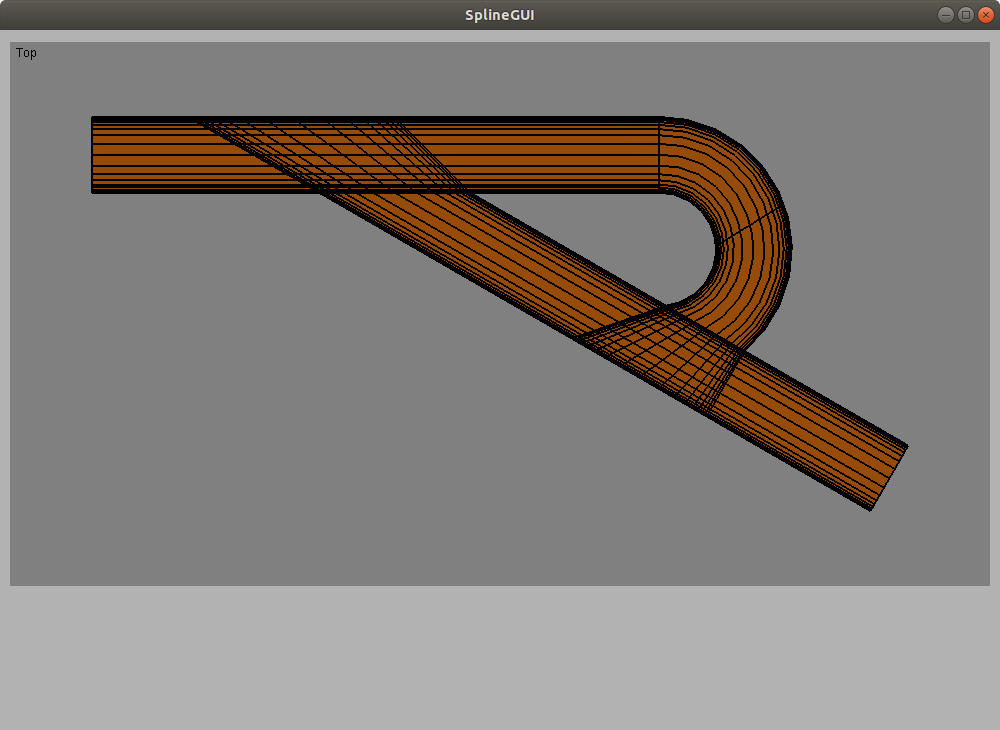Open VikingScientist opened 4 years ago
In particular https://github.com/sintefmath/Splipy/blob/f7bf4ef8e2a15433ec9ac16498b2275cc44e265f/splipy/utils/refinement.py#L14 should accept as input argument obj a SplineModel. This should take advantage of neighbourhood information to propagate refinement across the domain.
obj
SplineModel
In particular, the following script:
from splipy import * from splipy.io import G2 from splipy.utils import refinement import splipy.curve_factory as cf import splipy.surface_factory as sf import numpy as np from numpy import sin, cos, arctan2, pi, sqrt, tan # units in mm R = 3 # radius α = pi/6 # inlet angle l1 = 20 # counterflow length (left side) l2 = 10 # directedflow length (right side) l3 = 10 # length before circular arc w = 4 # channel width # first patch patches = [Surface()*[l3, w]] patches[-1][0,-1] = [-w/2/sin(α),w] # compute the circle-channel intersection point(s) b = -2*R*sin(α)-2*l3*cos(α) c = l3**2 t1 = (-b+sqrt(b**2-4*c))/2 x1 = t1*cos(α) y1 = -t1*sin(α) crv1 = cf.circle_segment_from_three_points([l3,0], [l3+R,-R], [x1,y1]) b = -2*R*sin(α)-2*l3*cos(α) c = l3**2 - 2*R*w - w**2 t2 = (-b+sqrt(b**2-4*c))/2 x2 = t2*cos(α) y2 = -t2*sin(α) crv2 = cf.circle_segment_from_three_points([l3,w], [l3+R+w,-R], [x2,y2]) # crv0 = cf.circle(center=[l3,-R], r=R) # debug help curve patches.append(sf.edge_curves(crv1,crv2)) crv3 = cf.line([ 0,0], t1* np.array([cos(α), -sin(α)])) crv4 = cf.line([-w/sin(α),0],(t1+w*cos(α))*np.array([cos(α), -sin(α)]), relative=True) patches.append(sf.edge_curves(crv3,crv4)) crv3 = cf.line([x1,y1], (t2-t1)*np.array([cos(α), -sin(α)]), relative=True) crv4 = cf.line(patches[-1][-1], patches[1][-1][:2] + w*np.array([-sin(α), -cos(α)])) patches.append(sf.edge_curves(crv3,crv4)) crv3 = cf.line([ 0,0], [-w/2/sin(α),w]) crv4 = cf.line([-w/sin(α),0], -w/sin(α)*np.array([cos(α), -sin(α)]), relative=True) patches.append(sf.edge_curves(crv3,crv4)) crv3 = patches[-1].edges()[-1] crv4 = cf.line([-l1,0], [-l1,w]) patches.append(sf.edge_curves(crv3,crv4)) crv3 = patches[3].edges()[1] crv4 = crv3 + l2*np.array([cos(α), -sin(α)]) patches.append(sf.edge_curves(crv3,crv4)) # make all patches compatible for p in patches: p.force_rational() dp = np.array([3,3]) - p.order() p.set_order(3,3) with G2("multipatch.g2") as f: f.write(patches)
Which is producing the following 6-patch geometry
Should after calling
refinement.edge_refine(patches[0], S=3, direction='v', n=15) refinement.edge_refine(patches[-1], S=3, direction='u', n=15)
Produce the following refinement
Similar changes should also be made to
https://github.com/sintefmath/Splipy/blob/f7bf4ef8e2a15433ec9ac16498b2275cc44e265f/splipy/utils/refinement.py#L67
In particular https://github.com/sintefmath/Splipy/blob/f7bf4ef8e2a15433ec9ac16498b2275cc44e265f/splipy/utils/refinement.py#L14 should accept as input argument
objaSplineModel. This should take advantage of neighbourhood information to propagate refinement across the domain.In particular, the following script:
Which is producing the following 6-patch geometry
Should after calling
Produce the following refinement